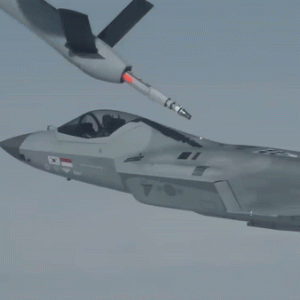With science fiction becoming science fact, with drones and machines already employed in the field of war, will the military use giant robots some day in the future?
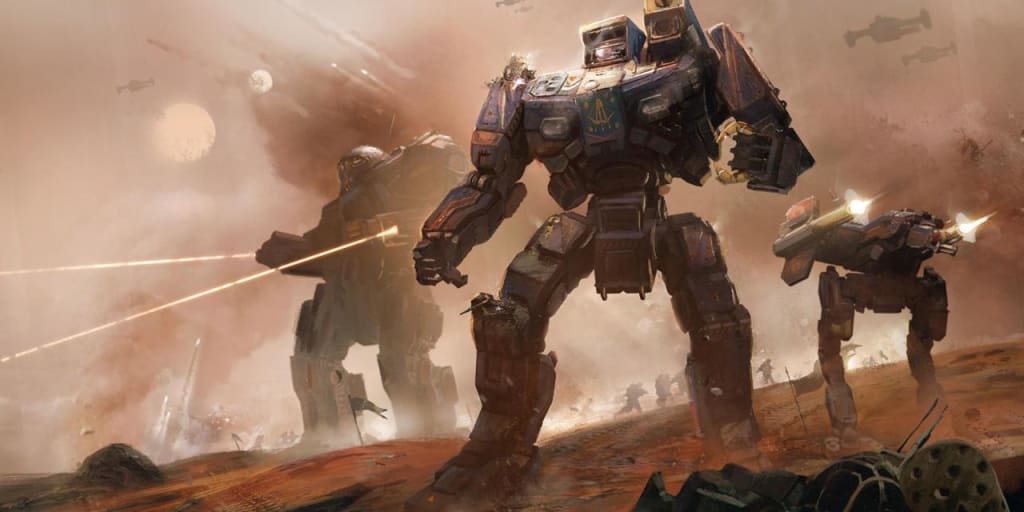
After marathoning the military giant robot anime Mobile Suit Gundam, one is forced to take a step back, and ask “Will the military use giant robots in the future?” Countless works of fiction, from cartoons like Robotech or Gundam and movies like Pacific Rim or Transformers, feature giant, bipedal mechs taking the future of war in hand or blaster, and blowing adversaries away in a hail of fire power.
And it’s cool. Really, really cool.
But is it practical? Are giant mecha actually usable in the field of war? With science fiction becoming science fact, with drones and machines already employed in the field of war, will the military use giant robots some day in the future?
What are Giant Robots?

What do we talk about when we talk about mecha? The first image that comes to mind, usually, is something out of a Japanese video game — an exoskeleton suit, perhaps 15 feet or more, that is loaded with an arsenal of weaponry. Maybe they can fly. Maybe swim. But, almost invariably, they are bipedal tanks that can take a hail of bullets, and keep on charging on.
From there, things diverge. In Transformers, the robots are a sentient life form, equipped with an AI that informs their actions. The anime Robotech presents technologically advanced aircraft that, with the push of a button, can shift into a ground-based mode, making it versatile for both air and ground combat. Aliens presents a robotic exoskeleton suit that is used to move huge crates around, like a crane.
But most people, whether they realize it or not, think of the Gundam, a bipedal tank with long and short ranged weaponry, piloted by a single pilot seated in the chest with either neurological links or controls.
While it is easy to scoff at such a concept, it is important to consider that many science fiction machines have become real in recent years. The cell phone was once just a Star Trek device. The atomic bomb was an H.G. Wells fancy. The internet…
You get the idea.
Is it so farfetched to ask “Will the military use giant robots?” After all, all these other science fiction concepts are employed in real life right now. Are giant robots all that farfetched?
Robots in the Military Today
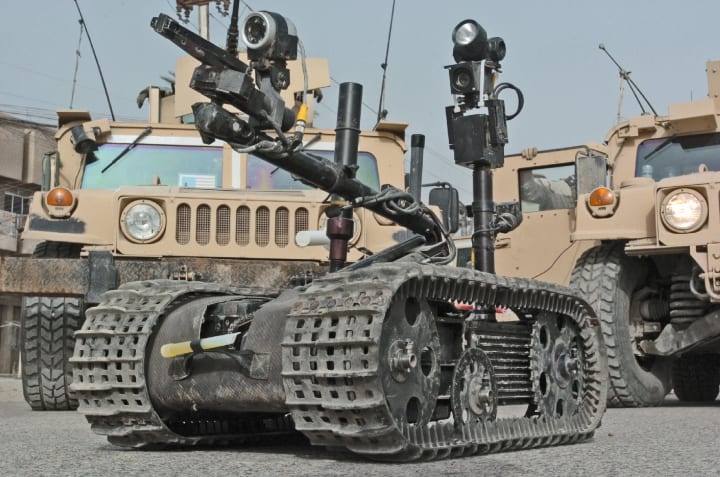
Before we dive into asking “will the military use giant robots,” let’s remember that the militaries of the world presently use robots in warfare. Machinery such as tanks, airplanes, and battleships have redefined the last century of warfare, ever since the start of World War I.
With the advent of drone warfare, mechanics and technologies have become further incorporated into warfare. Remote tanks and planes have been able to attack enemy bunkers without putting soldiers’ lives at risk. Some robots have been designed to search an area for bombs or mines.
In these cases, the use of robots and technologies are incorporated to protect lives. Granted, it is expensive, but as technology advances, mass production of military robots becomes a far easier, more effective process.
So, yes, today indicates that the future of the military will be progressively more mechanized. But that doesn’t mean that the military will start producing giant robots like Gundam.
Why Build Giant Robots?
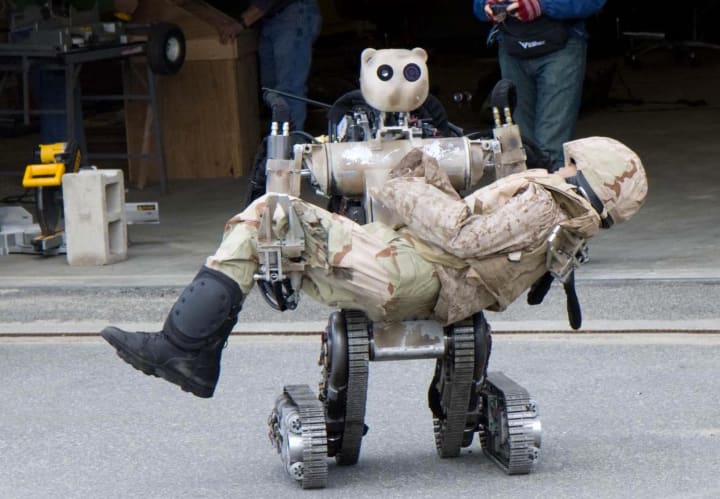
But before asking will the military use giant robots, we really ought to ask why should the military use giant robots? What benefits would a 20-foot machine of death offer when we have tanks and planes and drones already in service?
While there are numerous benefits to using drones in warfare, the truth is that they are, by nature, inaccurate. Machines do not have the delicacy or precision of a human being. When a drone drops a bomb, people die. Some estimate that several thousand civilians died in drone bombings during the Obama Administration. The damage is imprecise, but done to save American lives.
We need human care and delicacy without putting human lives at risk.
That’s impossible.
But wouldn’t a soldier’s life be safer if he or she were armored in tons of metal and machinery, wielding a rifle with the power of a tank with the accuracy of a marksman’s rifle?
So then you may suggest that we just throw more tanks at the problem, but tanks, due to their size and structure, cannot reach everywhere. There’s a reason we don’t put tanks in ISIS caves, for example, or that we had to use Agent Orange on the forests in Vietnam to help the tanks move through the country.
But a bipedal giant mecha? That could stride through tough terrain. The maneuverability of a soldier with the power of a tank. Giant robots offer the military a massive number of benefits, if utilized correctly.
But are they even possible, or is this just a fantasy of science fiction?
Learn to Walk

A skeptic or cynic, upon first seeing the typical designs for giant robot in media, often states “Oh, that will never work! Just shoot for the legs, and they’re finished!”
While the same thing can be said for a human soldier, the skeptics are onto something. The biggest wrench thrown into the idea of militarized robots remains the legs. Before we ask “Will the military use giant robots?” we must ask “Will the military learn how to make robot legs?”
More specifically, “How will they learn to make robot legs walk?”
One of the reasons the military uses tanks and other wheel-based vehicles is because it is far easier than crafting legs that work. Walking essentially involves shifting balance back and forth between two flexible support beams, falling forward, only to catch yourself, rebalancing yourself, before moving to the next leg. And that’s an over-simplified version of the issue.
This isn’t just a military problem, either. Many prosthetic legs have issues simulating what human legs do instinctively. Walking is an incredibly complicated process that scientists are struggling to master.
If this were three or four years ago, this would be enough to kill your fantasies. Forget it. Will the military use giant robots? They can’t even get the things moving without falling over. If the military created a Gundam four years ago, the thing would have fallen flat on its face just turning on.
But today is not four years ago.
Enter Agility Robotics, a tech that has spent years developing bipedal robots. In an interview with The Verge, CEO Damian Shelton explained his reasons for devoting such research into this.
“If you consider humans from a design standpoint, what we were designed for is being extremely agile in an extremely cluttered environment,” Shelton tells The Verge. He says when it comes to “legacy buildings” — i.e., those with stair-only access, or difficult steps or ledges — legged bots are going to be much more capable than those with wheels. “Or, if you want to be at ground level for the task you’re doing — like package delivery or on-site inspection.”
Applying this to warfare is easy. Tanks are often too clumsy to enter rocky or forested terrain. A giant bipedal robot could traverse these difficult terrains in a far more effective manner.
Controlling It
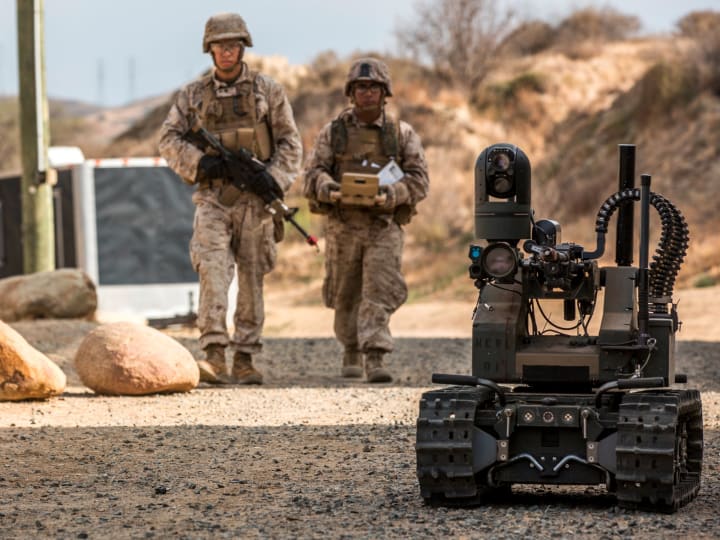
So now that this technology exists, will the military use giant robots?
Again, not necessarily. The next obstacle that comes into play is controlling the thing. With tanks and other vehicles, all one needs is a steering wheel or control stick. Steering a tank is incredibly complicated, as is flying a plane.
But they don’t have dexterous limbs or legs.
In the media, there appear to be three main ways of piloting robots. In Aliens, the Power Loader is piloted by binding itself to a pilot’s limbs. This would be the easiest means of control — the most simplistic. In order for this to work, though, the robots would have be only slightly larger than a human being. Though it is debatable if an armored exoskeleton (like Iron Man) is a “giant robot,” or just an advanced system of body armor.
On the other hand, there is a neurological link, like out of the popular film Pacific Rim or the popular anime Neon Genesis Evangelion, where incredibly large mecha are controlled by brain waves, with minor manual inputs. While this sounds far-fetched, it is not outside the realm of reality, especially with billionaires like Elon Musk funding projects to link the human brain with technology. However, we are probably decades away from even the most basic of neurological connections.
The most practical and realistic way to pilot a giant robot appears to be using manual controls, similar, once again, to Gundam. (I never expected to reference a long-running cartoon series in reference to realistic military technology.)
Though it would be incredibly complicated, it is possible to create a control system to control the suits. Some maneuvers, such as walking, would, in theory, be automated or controlled by an artificial intelligence. The question on how a robot should move should not be chief among the pilot’s concerns with so many other concerns. Others, such as aiming, might require more delicate inputs. The tech would also have to integrate physical, external stimuli in order to integrate the pilot with his suit’s experience.
All of this sounds farfetched. Will the military use giant robots if all these complicated elements are coming into play?
Fact: We’ve Already Begun Making Them
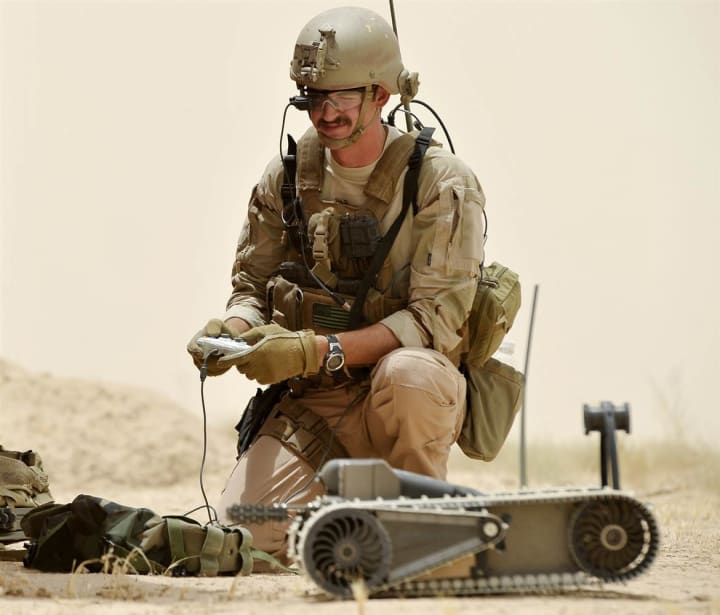
I admit it. I’ve been dodging this point the whole time. The truth is that there are already scientists hard at work crafting prototypes for giant military robots.
Granted, these machines are in the early stages. Many of these engineers are drawing inspiration from fiction, and even starting with wheeled giant robots to account for the leg problems. However, these designs are theoretically feasible for military use.
The technology draws from the tech used to create artificial limbs, and layering all that with tank armor.
The only problem is fuel.
But, once that problem is solved, it will only be up to the government to sign off on it. Will the military use giant robots, and revolutionize the face of warfare? Honestly, the future seems bright for a battlefield of protected soldiers unloading tank rounds from super-sized rifles into those who would rob humanity of freedom and sanctity of mind.
